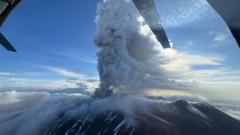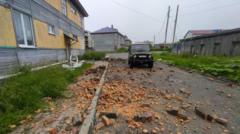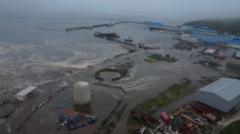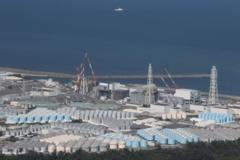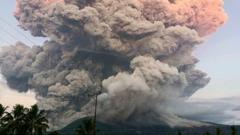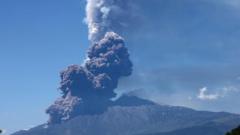Kamchatka Peninsula’s Krasheninnikov Volcano has erupted, marking a significant geological milestone.
Volcano in Russia Erupts After 500 Years of Silence

Volcano in Russia Erupts After 500 Years of Silence
Experts suggest volcanic activity could be linked to recent seismic events.
A dormant volcano in Russia’s far eastern region has made headlines by erupting for the first time in over half a millennium. The Krasheninnikov Volcano, located on the Kamchatka Peninsula, spewed ash up to six kilometers (approximately 3.7 miles) into the atmosphere in the early hours. Fortunately, Russia's emergency ministry has assured that populated areas are not in danger.
This remarkable eruption coincided with a series of seismic activities, including a powerful earthquake that triggered tsunami warnings in three regions of the peninsula just hours later. Experts suspect that these phenomena may be interrelated, particularly following a monumental 8.8 magnitude earthquake that struck the same area last week, prompting evacuation alerts as far away as French Polynesia and Chile.
Photographs from the Russian news agency RIA have captured the enormous ash plume rising over the volcano, with experts cautioning that strong aftershocks could follow. The subsequent quake measured 7.0 in magnitude and struck the Kuril Islands, with the emergency ministry reporting potential wave heights nearing 18 cm (7 inches). Authorities have advised residents in three coastal areas of Kamchatka to remain vigilant and move away from the shorelines, even with the expected minimal wave impacts.
Olga Girina, the head of the Kamchatka Volcanic Eruption Response Team, emphasized the unusual nature of the eruption, stating that the last known activity from Krasheninnikov occurred in the 15th century. The volcanic activity could potentially be linked to the preceding massive earthquake, indicating complex geological interactions in this seismically active region.
The Kamchatka Peninsula is notable for its remote location and lies within the "Pacific Ring of Fire," an area characterized by a high frequency of earthquakes and volcanic activity. Scientists and residents alike are closely monitoring the situation as these events unfold.

